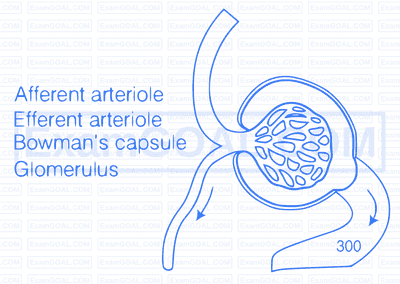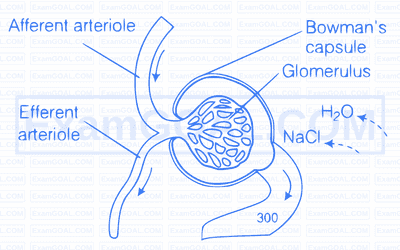The process of excreting ammonia is called ammonotelism. many bony fishes, aquatic amphibians and aquatic insects are ammonotelic in nature. Ammonia, as its readily soluble, in water is excreted by diffusion across body surface or through gill surfaces (in fishes) as ammonium ions.
It is highly soluble in water and requires large amounts of water to be lost from the body. Such a mode of excretion is thus suitable for aquatic organisms which have a constant access to water.
Terrestrial adaptation requires the production of lesser toxic nitrogenous wastes like urea, as urea is less toxic and less soluble in water. This is important adaptation for water conservation in animals body. Mammals, many terrestrial amphibians and marine fishes mainly excrete urea and are called ureotelic animals.
In most insects land snails, reptiles etc., uric acid is excreted, hence they are called uricotelic animals. Conversion of ammonia to uric acid and its elimination requires less water, thus it is very essential for terrestrial forms that do not have constant water supply.
The composition of glomerular filtrate and urine is not the same as the glomerular filtrate contains a large amount of water and other dissolved substances such as urea, uric acid, creatinine, amino-acid, glucose, sodium, potassium vitamins, etc.
Urine on the other hand is a transparent, light yellow fluid, which is formed after rigrous reabsorption and secretion from the filterate. It constitute about 95\% water and 5\% of other organic and inorganic substances.
Organic substances in urine includes nitrogen, urea, creatine, ammonia uric acid, oxalic acid, vitamins, hormones and enzymes. Whereas inorganic substance in urine include chloride, phosphate, sulphate, potassium, sodium, calcium, magnesium, iodine, arsenic and lead. Glucose is not found in urine normally. Hence, composition of glomerular filtrate and urine is different.
Terrestrial adaptation necessitated the production of lesser toxic nitrogenous wastes like urea and uric acid for the conservation of water. Mammals and many terrestrial amphibians mainly excrete urea and are called uriotelic animals. Ammonia produced by metabolism is converted into urea in the liver of these animals and released into the blood, which is filtered and excreted out by the kidneys. Some urea is retained in kidney in order to maintain osmolarity, reptilelos birds, land snails and insects excrete nitrogeneous waste, as uric acid in the form of pellet or paste with a minimum loss of water and are called uricotelic animals. Conversion of ammomia to uric acid and its subsequent elimination requires lesser amount of water. Hence, due to less availability of water on land, and in order to minimise water loss, terrestrial organism adapted themselves accordingly.
Label the parts in the following figure.

The labelling part of the given figure are as listed
